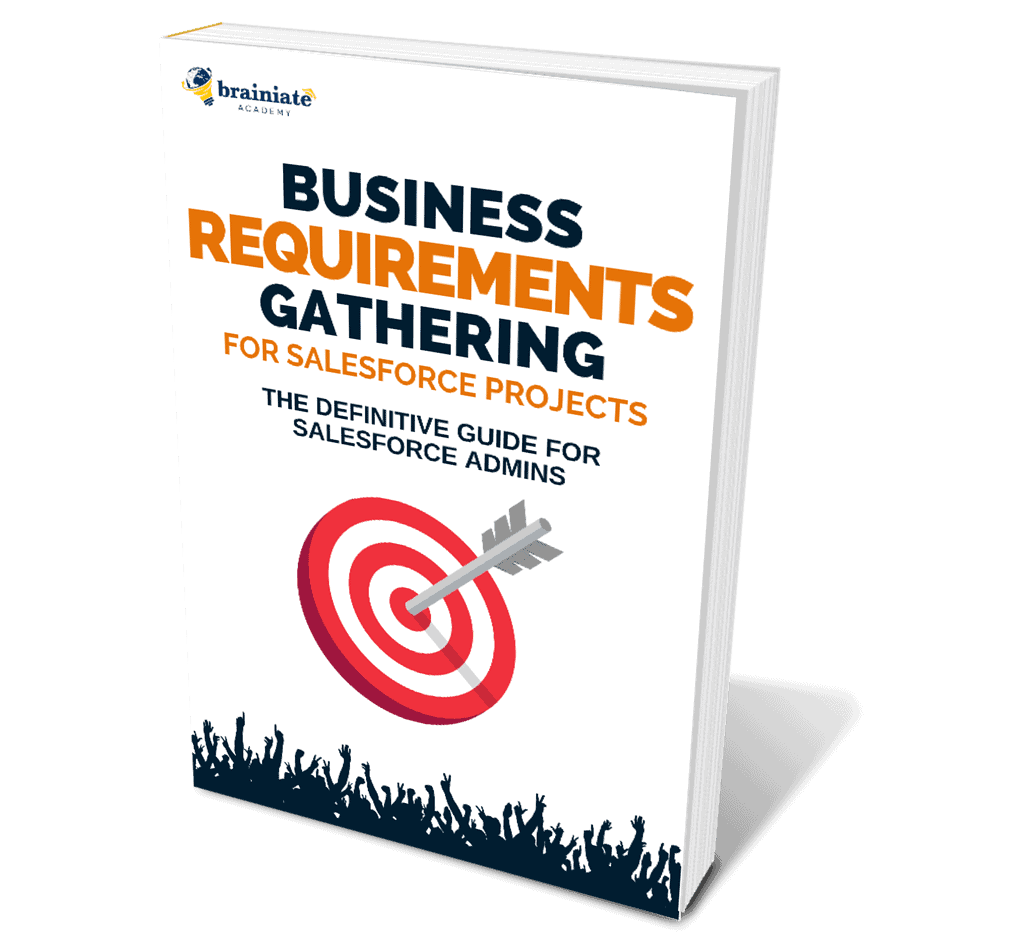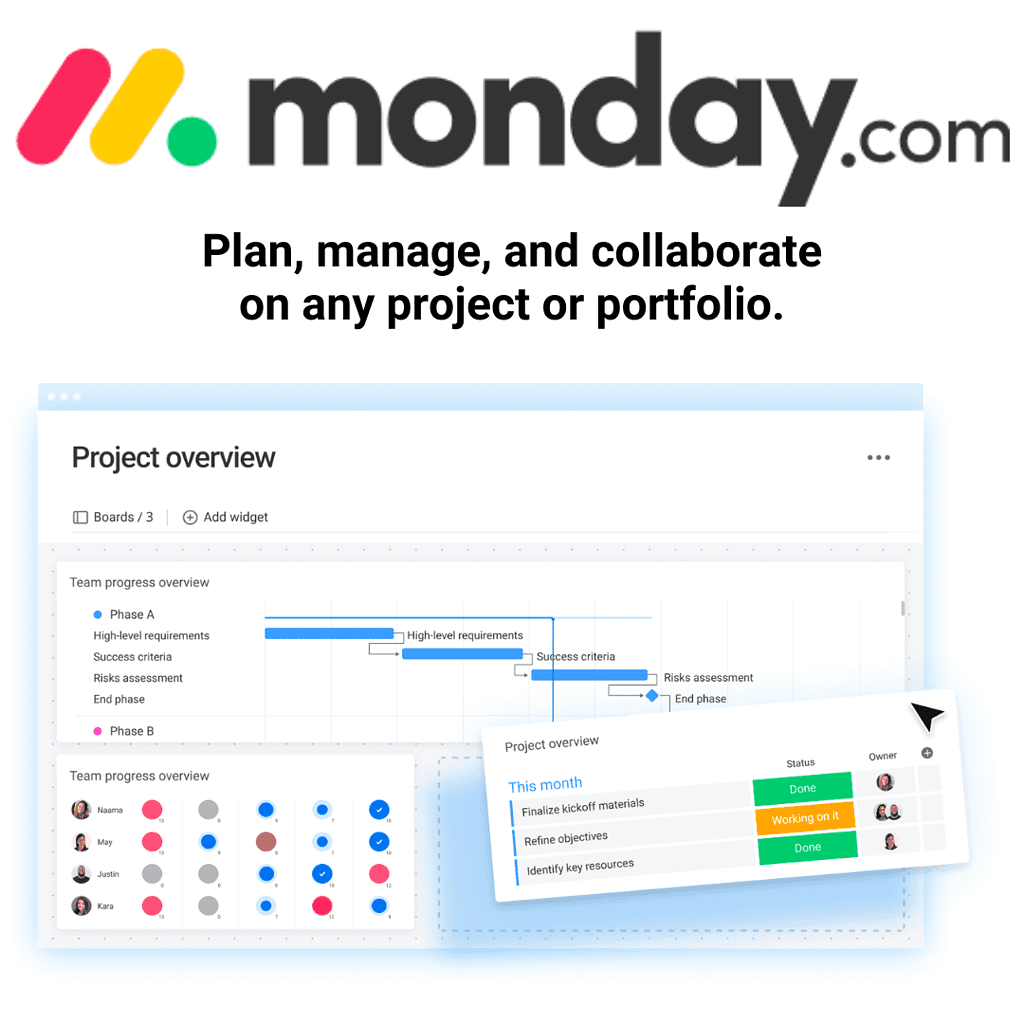The Ultimate Guide to Gathering Business Requirements

Introduction
Are you a Salesforce Admin who is just getting started with the basics of project management? Are you looking for more information about best practices for gathering business requirements? If so, you have come to the right place! This blog article will attempt to answer many of the most commonly asked questions about this vital process.
Generally speaking, requirements gathering is an iterative process that requires constant communication between the project manager, business analysts, and stakeholders. During this process, it is essential to understand and document the details of the project to ensure success. This includes understanding potential risks; determining key metrics; defining user roles; outlining tasks and activities; collecting customer feedback; and setting up success criteria.
For Salesforce Admins, having a deep understanding of how best to gather requirements for a Salesforce project is critical since projects related to Salesforce deployments or configuration updates are inherently complex. Many points throughout each project stage need careful attention to ensure its success.
This blog article will dive into some of these complexities and guide how best to manage the various challenges related to requirements gathering.
With all this in mind, let’s take a closer look at how successful Salesforce Admins gather business requirements for their projects.
What Is a Business Requirement?
A business requirement is a document that outlines a business’s specific needs, expectations, objectives, and limitations. It is typically created to provide guidelines for developing a product or service. Business requirements are used to define what potential solutions should achieve, and they help ensure that those solutions meet the needs of the business.
Business requirements typically include expected outcomes, performance objectives, quality standards, value statements, usage scenarios, assumptions, and constraints. They can also include critical costs, time constraints, and resource utilization metrics. A business requirement document should be detailed enough to provide an accurate understanding of what is expected from the solution when it’s complete.
The goal of creating a business requirement document is to identify exactly what must be done for a project or initiative to be successful. This helps ensure that developers have all the necessary information to create a solution that meets all expectations efficiently. Business requirements also allow stakeholders to assess their objectives against the proposed solution before it’s built—an essential step for confirming that everyone involved understands what’s needed and how it will be done.
SNAG THESE FREE RESOURCES!

Struggling to Manage Your Salesforce Projects?
Master Project Management With Our Expert Resources for Salesforce Admins.
Check out some of these FREE RESOURCES, templates, ebooks, and courses to take your project management skills to the next level and take control of your Salesforce career!
What Are the Different Types of Business Requirements?
Business requirements are the fundamental basis of any successful project. They define the goals and objectives of a project, as well as provide specific details on what must be completed to accommodate them.
Several business requirements need to be considered when managing projects related to Salesforce deployments and configuration updates. These include functional requirements, non-functional requirements, operational requirements, design constraints, performance requirements, and security considerations.
- Functional Requirements describe what tasks must be accomplished to meet a customer’s needs or desired outcome. For example, a functional requirement might include creating an automated payment process in Salesforce or customizing user profiles within Salesforce.
- Non-functional Requirements set criteria for how the system should perform its function. They provide usability, reliability, scalability, and maintainability criteria. For example, if you are working on deploying Salesforce for your organization, you may have a non-functional requirement for it to adopt international standards or work across multiple browsers.
- Operational Requirements specify how efficiently the project must run during operation once it is delivered and implemented by the customer. This includes uptime expectations (e..g 99% uptime) or response times (e.g., less than one second). Operational requirements include reliability expectations such as backup plans and data recovery protocols in case of system failure or outage incidents.
- Design Constraints refer to any limiting factors that may affect the design of your project solution but cannot be changed due to technical limitations or budget restrictions. It is essential to keep these in mind so that appropriate solutions can be planned based on real-world scenarios likely encountered during the development and implementation phases of the project life cycle.
- Performance Requirements focus on ensuring that all aspects of the system can handle heavy loads without disruption or failure due to latencies in service or overall slowness in performance due to inadequate memory capacity or bandwidth availability. This could mean setting limits on data storage capacity per user account or setting restrictions on which functions can run simultaneously when multiple users access the same system simultaneously.
- Security Considerations are always paramount when dealing with digital systems like SalesForce, especially given their cloud-based nature, where confidential information is often stored. Security considerations involve strict measures to protect sensitive information from unwanted access, malicious software installation, unauthorized data manipulation, etc., while ensuring compliance with regulatory standards such as GDPR.
How Do You Gather Business Requirements?
Gathering business requirements is essential in managing projects related to Salesforce deployments and configuration updates. It involves identifying the needs of stakeholders and understanding what they hope to gain from the project. To do this, it helps to have an organized approach that encompasses gathering relevant information, analyzing it and then determining the best approach to fulfilling these requirements.
One way to gather business requirements is by conducting interviews with stakeholders. This can involve a variety of topics depending on the project goals, such as customer preferences, existing work processes, resource availability, budget constraints, or any other insights that would be useful for planning a successful deployment. During interviews, the project manager or analyst must listen attentively and ask open-ended questions that allow stakeholders to provide more detailed answers about their particular needs. Additionally, questions should focus on ensuring all possible angles are covered by exploring potential obstacles or risks associated with the project’s success.
In addition to interviews, surveys can be used to collect data from multiple stakeholders quickly and accurately. Surveys are beneficial for collecting feedback on products or services and can include a range of questions related to features requested by customers or areas where they feel improvements could be made. The results of surveys can then be used to pinpoint areas that need further exploration during interviews or as input into creating a clear vision for how these requirements will be met within the scope of the project at hand.
Focus groups are another excellent tool for gathering business requirements. They bring together key stakeholders from across an organization in one space so ideas and points of view can be exchanged to develop creative solutions for meeting project objectives. By allowing interactions between participants who may not typically collaborate daily, focus groups have proven successful in eliciting valuable insight into how different teams across an organization function – giving project managers and analysts a better understanding of how their work will support those teams’ needs while adhering to budget constraints and staying within agreed upon timelines.
Finally, research is another essential step when gathering business requirements. It allows project managers and analysts access external data sources, which may provide invaluable insight into customer trends and behaviors outside internal stakeholder input alone. By combining primary (stakeholder) research with secondary (external) research sources like industry reports or competitor analysis documents, organizations can gain a deeper understanding of what customers expect from them now – as well as what changes may lie ahead in meeting customer demands over time.
By utilizing these various methods for gathering business requirements related to Salesforce deployments or configuration updates, managers and analysts will have the necessary information needed for making informed decisions that align with customer expectations while also taking advantage of new opportunities available through improvements in technology – allowing organizations greater flexibility when responding quickly (and effectively) to changing market conditions over time.
DOWNLOAD YOUR COPY!

The quick-start guide to gathering business requirements
Are you responsible for ensuring Salesforce projects run as smoothly as possible?
With the Business Requirements Gathering for Salesforce Projects: The Definitive Guide for Salesforce Admins, you can quickly get up to speed on the best practices for gathering business requirements.
This comprehensive book, written by Salesforce consultant and trainer David Giller, provides powerful methods and insights to ensure your projects are successful.
Why Is It Essential to Gather Business Requirements?
Gathering business requirements is essential for any Salesforce configuration or deployment project because it helps project managers and business analysts understand the needs of the business, allowing them to develop solutions that will meet those needs more effectively. Requirements provide essential insight into how a company operates and what specific objectives they are trying to meet. When all stakeholders are on the same page regarding these objectives, creating a plan and executing tasks to achieve them becomes more manageable.
Business requirements also help ensure that projects align with organizational goals and objectives. They provide valuable information about the project’s scope, including the timeline, budget, and resources needed. Additionally, they can help identify risks associated with the project before they become an issue, giving teams time to adjust their approach accordingly.
Finally, well-defined business requirements allow teams to make better decisions during project execution. Requirements act as a north star throughout each development phase, clarifying expected outcomes and keeping teams on track toward their ultimate goal. Without these definitions, there would be no way for project managers or analysts to determine success criteria or measure progress along the way.
SNAG THESE EMAIL TEMPLATES

200+ project management templates to help you get organized and increase your productivity!
Are you tired of wasting time writing the same email messages repeatedly?
I know your time is valuable, so I’ve created email templates specifically for Salesforce Admins to help you manage your Salesforce projects more efficiently.
Use these templates as a starting point or adapt them to fit your own needs. And you can cut and paste them into whatever email system you need.
Stop wasting time on menial tasks and start managing your projects more effectively.
Get access to a vast library of email templates to painlessly manage the entire project lifecycle!
Who Is Responsible for Gathering Business Requirements?
The responsibility of gathering business requirements typically falls to the project manager and the business analyst. As part of the planning phase of a Salesforce project, the project manager and analyst must work together to understand and document an organization’s current business processes, objectives, and needs related to the Salesforce deployment or configuration update.
This requires an in-depth investigation of all pertinent information, including data about existing processes, systems, user roles, integrations with other software platforms, technical environment requirements, etc.
Additionally, it may involve interviews and collaboration with key organizational stakeholders to ensure that all factors for successful implementation are as accurately captured as possible. This process is essential for creating a clear picture of how the business wants to use Salesforce and what problems they want it to solve.
Ultimately, this will enable the project team to develop a comprehensive plan that meets their requirements efficiently while staying within budget and timeline constraints.
🔥 SUBSCRIBE! 🔥

Get practical Salesforce advice in your inbox!
Feeling overwhelmed by everything you have to do as a Salesforce Admin?
I know how it feels.
I created the FREE Brainiate Newsletter – to help you stay up-to-date with the latest Salesforce news, advice, and product recommendations.
Sign up for my newsletter and get all that information right in your inbox – without having to search for it yourself. You’ll be able to focus on your projects with peace of mind, knowing you’re always up-to-date on the latest Salesforce updates.
Click the button below and sign up for my FREE Brainiate Newsletter today!

What Is the Difference Between a Business Requirement and a Technical Requirement?
Business requirements and technical requirements are two critical components of project management. Business requirements focus on the desired outcome a business is trying to achieve. In contrast, technical requirements refer to the specific technical details needed to support the successful implementation of that outcome.
Regarding Salesforce deployments and configuration updates, business requirements typically include customer needs and objectives, expected outcomes, performance expectations, and other related goals. On the other hand, technical requirements will focus on practical matters such as system functionality, platform compatibility, security considerations, and usability.
Business requirement documents describe what customers want from their project regarding results such as cost savings or enhanced user experience.
Technical requirement documents explain how these desired results will be achieved – what tools and technologies need to be used or developed? What hardware is needed? What coding language should it use? These documents also provide information about any existing infrastructure or legacy systems that must be considered when developing a project plan.
In summary, business requirements define the “what” of a project, while technical requirements define the “how.” While one cannot exist without the other, they have distinct characteristics and must both be given adequate attention during any Salesforce deployment or configuration update.
How Do You Prioritize Business Requirements?
Prioritizing business requirements is essential for any project manager or business analyst as it ensures that the project can stay on track and meet its goals. The process of prioritizing business requirements begins with a comprehensive review of the customer’s needs. This review will provide insight into what features and functions are necessary to satisfy the customer’s expectations and how each requirement is measured in terms of importance. After analysis, the requirements should be categorized based on their impact and importance to the project.
The most important tasks should be placed at the top of the list, followed by those with lower importance. This list can be further refined by assessing urgency, complexity, and feasibility. Tasks that are urgent and simple should be given higher priority than complex and lengthy tasks that can still wait for some time.
Also, include external factors like competition in your evaluation; if another company poses a significant competitive threat, this must be considered when deciding which tasks should take precedence over others.
In addition to assessing importance and urgency, another factor to consider while prioritizing is the available resources required to complete each task. Suppose a specific request requires special skills or tools which are not readily available. In that case, it may not be feasible to assign it a high priority until these resources can be acquired in time so as not to delay progress on other necessary tasks.
Finally, each requirement should also pass through a risk assessment process before being added to the priority list – if there is potential for failure or unexpected costs associated with any particular task, these must be identified upfront so that mitigation strategies can be implemented before attempting any actionable item on the list.
Prioritizing business requirements is an essential part of successful project management and requires diligence from both individuals responsible for managing projects related to Salesforce deployments and configuration updates as well as from other stakeholders involved in decision-making processes – only through a joint effort will it be possible to ensure that all tasks related to Salesforce configurations are completed promptly without sacrificing quality standards or customer satisfaction levels.
POST SPONSOR:

Monday.com
You have a lot of projects on your plate, and it feels like you’re always playing catch-up.
Juggling multiple tasks, timelines, and deadlines can be incredibly frustrating and overwhelming. It’s hard to know where to start, let alone keep track of everything.
Monday is the solution for project management mayhem. With Monday, you can easily create new projects, track tasks and milestones, set deadlines, share files and comments with your team, and more.
Click on my affiliate link to start a free trial of Monday, and see how it can transform how you manage your Salesforce projects.
How Do You Document Business Requirements?
Documenting business requirements is essential in any Salesforce deployment or configuration update project. It involves understanding the organization’s and its customers’ needs so that a successful solution can be implemented. As such, taking detailed notes during interviews with stakeholders and end-users is critical to ensure that their business requirements have been accurately captured.
When documenting business requirements, it’s essential to be as specific as possible. This helps ensure that everyone involved in the project is on the same page and allows for more efficient development processes down the line. Start by listing out each individual requirement, then explain how the requirement should be fulfilled, including details such as necessary functionality and data elements used. From there, explain how this requirement will contribute to achieving the desired outcome of improving customer experience or increasing operational efficiency. Finally, note any risks associated with implementing this requirement – both from a technical standpoint and other potential considerations (e.g., legal).
In addition to capturing business requirements in writing, it is also helpful to create diagrams or flow charts that depict how users will interact with the system once the changes have been implemented. These visuals make it easier for stakeholders to understand how things are configured and help developers build custom solutions quickly and efficiently. Finally, ensure you get sign-off from all appropriate stakeholders before moving forward with design or implementation activities!
POST SPONSOR:

Lucidchart
Lucidchart is perfect for creating flowcharts, wireframes, mind maps, and more — all within a single product!
With real-time collaboration and accessible sharing functions, your team can make stunning visuals quickly and efficiently while leaving plenty of room for creative freedom.
This tool allows Salesforce Admins to build process maps faster through beautiful visuals.
Why wait? Use my affiliate link to start your FREE Lucidchart trial today and say goodbye to confusing paper charts and frustrating process mapping software!
How Do You Validate Business Requirements?
Validation of business requirements is essential to managing any project related to Salesforce deployments and configuration updates. It involves carefully evaluating the needs and expectations of stakeholders, analyzing customer feedback, and researching industry trends to ensure that the proposed solution will accurately meet the requirements.
The process begins with gathering relevant data from stakeholders, customers, and other sources. This can include interviews, questionnaires, surveys, focus groups, literature reviews, and other methods for collecting qualitative information. Once all necessary data have been collected, it must be analyzed to identify discrepancies between the desired outcome and actual results. If discrepancies are found, further research should be conducted to determine if there are more effective ways to achieve the desired outcome.
In addition to analyzing existing data points, validating potential solutions with key stakeholders is essential. This includes discussing their specific needs or preferences concerning the solution and ensuring they are satisfied with the proposed approach before moving forward.
Additionally, validating business requirements may involve conducting usability tests or feasibility studies to determine if a proposed solution is viable and practical in terms of cost-benefit analysis or other factors. Ultimately, by taking a comprehensive approach towards validating business requirements before implementation of a Salesforce deployment or configuration update project, project managers and business analysts can help ensure that projects run smoothly while meeting customer expectations.
What Are Some Common Challenges With Gathering Business Requirements?
Common challenges related to gathering business requirements for Salesforce deployments and configuration updates include a lack of understanding of the business objectives, discrepancies between stakeholders’ expectations and the level of detail required limited resources or bandwidth, inefficient communication processes, and difficulty creating well-defined user stories.
A thorough understanding of the organization’s business objectives is essential when gathering requirements, as it helps determine what areas need to be updated or improved. Moving forward with an effective solution can be challenging when stakeholders do not initially provide the necessary detail.
Additionally, if there are limited resources or bandwidth available, the task can become overwhelming. Inefficient communication processes can also lead to confusion and misunderstanding among team members, further complicating the issue. Finally, creating precise user stories that effectively capture the functional requirement without being overly specific or restrictive is often challenging.
Overall, within a project that involves Salesforce deployments or configuration updates, all relevant stakeholders must have clear expectations regarding scope and objectives and an efficient process for gathering requirements to ensure the successful completion of the task.
What Should Be Done With Business Requirements Once They Are Gathered?
Once business requirements have been gathered, a few essential steps should be taken to ensure the project is successful. First and foremost, evaluating each requirement and assessing its importance and relevance to the overall project goals is critical.
Does it need to be included for the project to be successful?
If so, then it should be prioritized accordingly. It’s also important to consider how each requirement works together with other requirements and if they support or conflict with one another. These details should all be documented to ensure that everyone involved in the project will understand how each requirement fits into the overall strategy.
When evaluating business requirements, it can also be helpful to look at different use cases or scenarios and consider how each requirement impacts them. This can help identify any potential issues that might arise during the development or implementation of the project.
After completing this evaluation, it’s crucial to define acceptance criteria for each requirement and document this. This will help define what “done” looks like for each individual requirement and serve as a guide throughout the project’s lifecycle.
By carefully assessing business requirements before moving forward with deployment or configuration updates, you can optimize the Salesforce process by ensuring that only relevant needs are addressed and eliminating wasted time on unnecessary tasks or features.
Additionally, having a clear set of acceptance criteria helps clarify what success looks like for each step of the process, which helps streamline decision-making throughout the life cycle of your projects!
How Are Business Requirements Used in Project Planning?
Business requirements are essential for effective project planning. They provide the foundation for detailed plans and ensure that the desired outcome is achieved. Business requirements identify what needs to be accomplished, who needs to be involved, how it will be completed, and when it must be done.
For projects related to Salesforce deployments and configuration updates, business requirements provide the necessary details to plan out specific tasks related to the project. This could include gathering customer information, understanding their current Salesforce setup, and mapping out any changes needed to meet their new requirements.
Business requirements also help set expectations on the project’s timeline and estimate any costs associated with making changes or implementing new features. Having a clear set of requirements helps ensure everyone is on the same page regarding what needs to happen throughout a project.
Business analysts typically take the lead in gathering business requirements from stakeholders by engaging in workshops or other types of meetings to understand end-user goals and objectives for the project.
For example, suppose a customer wants a particular feature implemented but can’t articulate why they want it or what value it will bring them. In that case, a business analyst can help uncover these underlying details, which can then inform decisions about whether or not this should be part of the final product delivered as part of the project.
The business analyst can also use this information from stakeholder conversations to create user stories that clarify what “success” looks like for each piece of work identified for completion during different phases of the project cycle.
Overall, having a comprehensive understanding of business requirements is paramount when it comes to the successful planning and execution of projects related to Salesforce deployments and configuration updates. It allows all parties involved – customers, stakeholders, and developers – to have shared expectations around timelines, costs, desired features, etc., which can help immensely keep projects on track and ensure successful outcomes.
POST SPONSOR:

Jasper AI
Salesforce Admins are busy and overwhelmed managing projects and incoming requests.
It’s challenging to keep up with everything when constantly being pulled in different directions. You need a way to manage your time more effectively, and that’s where Jasper comes in.
With Jasper, you can easily delegate writing tasks to save yourself time and stress.
Tell Jasper what you need, and he’ll take care of the rest, using persuasive language that will make your colleagues take notice.
How Can Changes to Business Requirements Be Managed During a Project?
Managing changes to business requirements during a project can be challenging, but it can also help ensure that the final product meets the customer’s needs. Creating an environment where change requests are welcomed and addressed promptly is essential. This will require effective communication between all stakeholders involved in the project.
A key aspect of managing changes is obtaining sign-off from stakeholders on any changes before implementation. By doing so, you can ensure that expectations and goals remain clear throughout the project. It is best practice to document change requests and issue tracking numbers for reference and follow-up to prevent delays or costly rework. Furthermore, the impact of each change request should be assessed in terms of time and cost before being approved.
It is important to remember that any changes implemented must still fall within the parameters of the original scope, timeline, budget and desired outcomes established during the project’s initial planning. In addition, it’s critical to consider how any changes may affect other aspects of the project, such as the schedule and resources needed to complete tasks.
Involving subject matter experts throughout this process can help manage commercial risk associated with changes to business requirements. Regularly scheduled meetings with stakeholders should also be part of this process; these meetings provide a platform that allows everyone involved in the project to have their voice heard when decisions are made about proposed changes.
Ultimately, by creating an environment where everyone understands what is expected from them and having processes in place for dealing with potential changes along every step of a Salesforce deployment or configuration update project, success is more likely to be achieved!
Disclosure: Some of the links in this article may be affiliate links, which can compensate Brainiate LLC at no cost to you if you decide to make any purchase. These are products we’ve personally used and stand behind. This site is not intended to provide financial advice and is for entertainment only. You can read our affiliate disclosure in our privacy policy.






